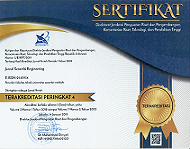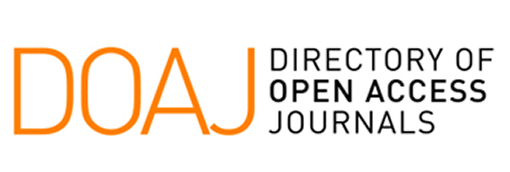Spatial Planning and Urban Open Space Utilization in Banda Aceh: A Policy Implementation Review
Keywords:
Banda Aceh, Policy Implementation, Public Open Space, RTRW, Urban PlanningAbstract
This study examines the implementation of regional spatial planning (RTRW) policy in the utilization of public open spaces in Banda Aceh’s city center. Public open spaces play a critical role in urban environments, providing ecological, social, and recreational benefits. However, the success of spatial planning policies depends heavily on their realization on the ground. This research employs a qualitative approach, combining field observations with document analysis to assess whether the public open space components outlined in Banda Aceh’s RTRW are being implemented. The findings reveal a notable discrepancy between planning and execution. Several public areas that have been designated as open spaces in the RTRW remain undeveloped or neglected, with limited government intervention or infrastructure development. This disconnect suggests issues in policy enforcement, budgeting, or coordination among relevant stakeholders. As a result, the potential of these spaces to contribute to urban sustainability and community well-being remains underutilized. The study underscores the need for more consistent monitoring, cross-sector collaboration, and community involvement to ensure that spatial planning policies are effectively translated into functional and accessible public open spaces. Strengthening the implementation process could play a significant role in enhancing the urban quality of life in Banda Aceh.
References
[1] Gehl, J., “Cities_For_People_-_Jan_Gehl,” Washington, DC: Island Press. 2010.
[2] M. Ghasemieshkaftaki, K. Dupre, and R. Fernando, “A Systematic Literature Review of Applied Methods for Assessing the Effects of Public Open Spaces on Immigrants’ Place Attachment,” Architecture, vol. 3, no. 2, pp. 270–293, 2023, doi: 10.3390/architecture3020016.
[3] M. Ghasemieshkaftaki, K. Dupre, J. Campbell, and R. Fernando, “Enhancing Place Attachment Through Developing Public Open Places: A Cross-Cultural Study in Gold Coast, Australia,” Architecture, vol. 5, no. 1, pp. 1–21, 2025, doi: 10.3390/architecture5010010.
[4] Rahmadani, Suci. "Analisis Hukum Pelaksanaan Peraturan Menteri Agraria Dan Tata Ruang/Kepala Badan Pertanahan Nasional Nomor 6 Tahun 2018 Tentang Pendataran Tanah Sistematis Lengkap Di Kantor Pertanahan Kota Medan." (2023)
[5] K. Ramadhan, E. Saputra, U. Indonesia, and C. Jakarta, “Green open space planning based on spatial justice in Jakarta : Study of child-friendly integrated public spaces / RPTRA and general green open space,” vol. 2, no. 2, pp. 100–120, 2025.
[6] S. Handayani, M. Irwansyah, and M. Isya, “Tinjauan Sarana Dan Prasarana Jalur Pedestrian Di Kawasan Peunayong, Banda Aceh,” J. Arsip Rekayasa Sipil dan Perenc., vol. 1, no. 1, pp. 72–80, 2018, doi: 10.24815/jarsp.v1i1.10357.
[7] Kementrian Pekerjaan Umum Dan Perumahan Rakyat, “Peran Penting Tata Ruang Agar Pembangunan Kota Berkelanjutan,” https://pu.go.id/berita/peran-penting-tata-ruang-agar-pembangunan-kota-berkelanjutan#:~:text=Penataan%20ruang%20memiliki%20peran%20penting,sosial%20dengan%20tidak%20merusak%20lingkungan, pp. 23–25, 2009.
[8] Badan Pusat Statistik Kota Banda Aceh, "Kecamatan Baiturrahman Dalam dalam Angka 2024,” BPS Kota Banda Aceh, Katalog: 1102001.1171012, 2024
[9] J. Xia, J. Kang, and X. Xu, “Global Research Trends and Future Directions in Urban Historical Heritage Area Conservation and Development: A 25-Year Bibliometric Analysis,” Buildings, vol. 14, no. 10, 2024, doi: 10.3390/buildings14103096.
[10] I. D. Yanti, Izziah, M. Isya “Konsep Zona Kawasan Situs Sejarah Gampong Pande Banda Aceh,” Jurnal Arsip Rekayasa Sipil dan Perencanaan (JARSP). 1(9):63-71, 2018, doi: 10.24815/jarsp.vlil.10354.
[11] Pemerintah Kota Banda Aceh, “Rencana Tata Ruang Wilayah Kota (RTRW) Banda Aceh Tahun 2009-2029/ Revisi Tahun 2017,” pp. 1–225, 2018.
[12] Iuliia, Krasnoperova, and Soloveva Valentina. "A method developed for selecting streets to create pedestrian public spaces with the use of transport modelling." Procedia Computer Science 212 (2022): 83-92.
[13] E. Mendzina and K. Vugule, “Importance and planning of pedestrian streets in urban environment,” Landsc. Archit. Art, vol. 16, no. 16, pp. 80–86, 2020, doi: 10.22616/j.landarchart.2020.16.08.
[14] M. H. Mulki, “Struktur Ruang Kota Banda Aceh Konteks Kecamatan Baiturrahman,” Talent. Conf. Ser., vol. 5, no. 1, pp. 493–500, 2022, doi: 10.32734/ee.v5i1.1505.
[15] D. Darwin, S. Syahrul, and H. Basri, “Analisis Karakteristik Hidrologi DAS Krueng Aceh, Provinsi Aceh (Studi Kasus Sub DAS Krueng Jreu dan Sub DAS Krueng Khea),” Rona Tek. Pertan., vol. 14, no. 1, pp. 58–72, 2021, doi: 10.17969/rtp.v14i1.21606.
Downloads
Published
Issue
Section
License
Copyright (c) 2025 Atika Aditya, Mirza Irwansyah (Author)

This work is licensed under a Creative Commons Attribution 4.0 International License.












